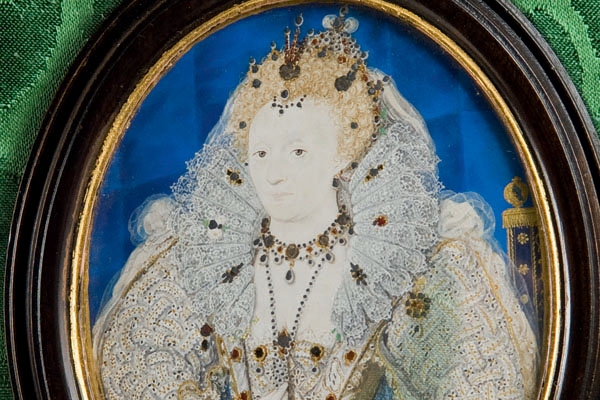The first volume of Peter Ackroyd’s six-volume history of England took us from prehistory to the death of Henry VII. Now the great charabanc rattles on. Here is a fat book of old-fashioned, great-man history taking in the second of the Harries twain, Ned the Lad, Mary and Bessie.
Things don’t begin well; the speed at which Ackroyd is producing this material is perhaps starting to show. ‘The land was flowing with milk and honey,’ Ackroyd tells us. Whatever the condition of the land, its chronicler is flowing with campness and cliché: we get ‘the sun in its splendour’, ‘the power and the glory’, ‘a new golden age’, ‘a question of honour’, ‘stiffen the sinews and summon up the blood’, and ‘the sport of kings’ by the time we’ve reached the foot of page three.
That soon calms down, and Ackroyd hits cruising speed, churning out short, telegraphic sentences in the active voice. There’s the slight feel, I don’t know whether intentional, of his borrowing a style from the Anglo-Saxon chroniclers, next to whom he seems to position himself as heir. To take a chunk more or less at random:
From this time forward, in fact, [Henry VIII] no longer employed one pre-eminent minister. The years of Wolsey and of Cromwell were over. Now the king decided to supervise the affairs of the realm. He described himself as ‘old’, but he was not too old to control the business of the council or to read the dispatches of his ambassadors. The king’s council was established upon a more formal basis; it had a membership of approximately 19 peers or prelates, and met each day at court. A minute book was to be kept.
Abrupt, decisive, unsupported by a single footnote or reference, Ackroyd’s great synthesis wouldn’t pass muster as a Wikipedia entry. This ‘sweating sickness’ that blighted the land: what was it? Skelton may have written such-and-such: but where and when? You learn that the ‘HA’ monogram representing Henry’s union with Anne Boleyn ‘was interpreted by some as a ribald ‘Ha! Ha!’, but you look in vain to learn by whom. You’re told that foreigners thought Englishwomen beautiful and Englishmen drunken, profane and barbaric, but how we know this isn’t indicated.
Figures and statistics are very scarce — and when they are there, they are there as much for éclat as for éclaircissement: we learn that a Scottish expedition by the Earl of Hereford destroyed 243 villages, five market towns and seven monasteries; or that it took 6,500 horses to carry the guns and ammo for an invasion of France. But if you wanted to read a scholarly history, rather than a storytelling one, you wouldn’t be buying this book anyway.
The eccentricity of Ackroyd’s determination to write so narrow a history of England as this looks more pronounced as time goes on. Scotland exists largely as a series of border skirmishes and a repository for rival heirs. Flodden Field gets a paragraph. You’d barely know Ireland was there — the rebellion at the end of the 16th century is allowed a page or two, as Essex passes through. Wales doesn’t even feature in the index.
The international frame, politically and economically, while not ignored is certainly scanted. When one considers how subtly and enlighteningly Thomas Penn’s history of Henry VII, The Winter King, set the English crown in its European context while still telling a compelling story, Ackroyd suffers by comparison.
The book has virtues of its own, though, not least the peremptorily authoritative voice of its narrator. There’s the odd dry animadversion on pious liberal historians: ‘The historian here often pauses to deliver a lament on human bigotry, but the temptation should be resisted’ — and an admirable willingness, when something isn’t known or can’t be guessed at, to say so.
Ackroyd’s eye for detail, and relish for the sanguinary excesses of the age (he never stints to let you know how many strokes of the axe it took to lop off a given head) fills even the most familiar stories with interest. When heretics were burned, for instance, kindly friends would tie little bags of gunpowder round their necks, ‘but on occasions they made too small an explosion and only increased the suffering’. Each faggot of wood you contributed to the fire got you 40 days off purgatory, so responsible parents would get their children to bring along kindling.
Ackroyd’s account of the execution of Mary Queen of Scots — where you feel his chronicler’s briskness give way to a rather more novelistic immersion — is wonderfully well told and atmospheric.
Early modern bitchiness is well preserved through quotations. When Katherine Parr married the king (by then the fatty of the Holbein portrait), his ex-wife, Anne of Cleves, is said to have remarked pertly: ‘A fine burden Madam Katherine has taken on herself!’ Anne Boleyn was a ‘night crow’and a ‘goggle-eyed whore’. The King’s marriage to ‘the Flanders Mare’, to whose ‘displeasant smells’ and ill-favoured looks he objected, was unconsummated, even though they occasionally shared a bed. He told his doctor that he had had duas pollutiones nocturnas in somno instead, which is Latin for a couple of wet dreams.
We hear that when Henry VIII was in his fifties he spent a good deal of money on rhubarb (sovereign against choler). We meet an anti-Catholic dog: the Dean of Wells trained his ‘to snatch off the Papistical square caps from any conforming clerics who chose to wear them’. We note the arrival of novelties such as the coach and the wristwatch (Elizabeth I wore the first in history). We are solemnly informed of ‘one of the few occasions when a pun has accompanied a violent assault’: John Stubbs, to be punished for writing a seditious pamphlet by having his right hand cut off, exclaimed, just as sentence was due to be carried out, ‘My calamity is at hand.’ A weak pun, but brave under the circumstances.
To portray Tudors as an analysis-free salmagundi of amusing details would be slightly unfair, though. However lightly it’s worn, Ackroyd’s central concern in this volume is religion. The English Reformation, he argues persuasively, was a political rather than a theological issue: ‘It had no roots in popular protest or the principles of humanist reform.’ Henry VIII remained in every respect, except his view on Papal supremacy, a conventional Catholic.
With a pragmatism Ackroyd celebrates, his daughter Elizabeth’s main concern was to steer a middle course between the Anabaptist headbangers on the one hand and the recusants looking to Rome on the other. This is the story of how the Anglican church came into being, in other words. It’s the fault of light-minded readers like this one, perhaps, that rhubarb, nocturnal emissions and hat-snatching dogs are what seem most likely to linger in the mind.







Comments